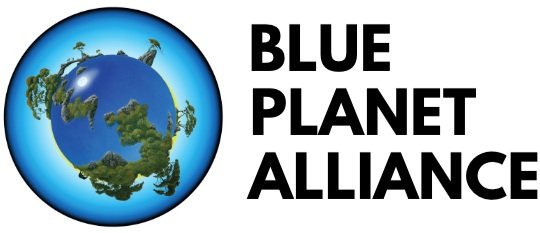The Road Forward: Climate Week NYC in Review
It all started with a pickle.
Well, a PICL, actually — the Pacific Island Conference of Leaders (PICL). But back to that in a second.
For the last decade and a half, the frenetic two weeks in the middle of September have been among the most important dates on the calendar for the future sustainability of the planet. Since Climate Week NYC was launched in 2009 to coincide with UNGA (the commencing of each new UN General Assembly), thousands of thought leaders from the public and private sectors, the media, and civil society have gathered in New York — ambassadors, academics, and activists convening with investors, incubators, and innovators to debate, ideate, and advocate climate solutions.
And as we’re currently two years into the “Decade of Action” — recognition by scientists and other experts that we have until 2030 to make substantive changes to our way of life, particularly with regards to consumption of fossil fuels, or face disastrous consequences — there is no time to waste.
(As this article is being finished, Hurricane Ian is bearing down on Florida — potentially just the second Category 5 hurricane to make landfall in the U.S. in 30 years — and thus a stark reminder of the consequences of ignoring the climate emergency.)
This year, the PICL set the tone for Climate Week, as leaders from 16 of its 20 member countries and territories gathered in Honolulu September 12-14, with an emphasis on the “existential threat that climate change poses.”
Blue Planet Alliance hosted an official side event at PICL, “The Road to COP 27 and Beyond: A Closer Look at the Progress, Challenges, and Opportunities for 100% Renewable Energy in the Pacific Islands.” That panel discussion featuring key stakeholders from Hawaii outlined the roadmap that the Aloha State took to navigating and ultimately reaching a legislative mandate to transition fully to 100% renewable energy by 2045. And that roadmap will be critical for other countries to follow as we build momentum toward COP 27, the huge annual UN climate conference, held this year in Egypt (November 6-18).
Following PICL, many of those Pacific island leaders, as well as the Blue Planet Alliance team, journeyed 4,956 miles to the east, where the spotlight was most certainly on the impact of climate change. And leading the way was the Pacific island nation of Tonga, one of the countries most vulnerable to the ravages of climate change. The Prime Minister of Tonga, a country that is in the earthquake- and volcano-dominated Ring of Fire, announced that his country would be transitioning to 100% renewable energy by 2045. That, of course, is the exact mission of Blue Planet Alliance: helping countries make the energy transition to being fully renewable. And Blue Planet Alliance Founder Henk Rogers made the keynote speech following Prime Minister Siaosi Sovaleni’s major announcement.
Tonga’s announcement follows earlier commitments from Hawaii, Guam, and Palau, each of which was made with some assistance from Blue Planet Alliance and its partners. And now Blue Planet has its sights set on other island nations and territories in the Pacific and Indian Oceans and the Caribbean Sea. (Stay tuned for more potential announcements this fall from Egypt.)
The rest of Climate Week was no less eventful, as Blue Planet Alliance partnered with Peace Boat US, EarthX, Solgaard, Mana Pacific, the Pvblic Foundation, Tomaga, GSES, and other organizations on a variety of critical activities meant to educate and entertain.
The week started on Monday with a virtual event, hosted by “Exploring by the Seat of Your Pants,” in which Blue Planet Alliance Global Ambassadors Helen Mancini (New York) and Manzel Ngirmeriil (Palau) joined Peace Boat US Director in a wide-ranging discussion on the role of youth in leading the climate movement.
Later that night, Blue Planet Board member and rising star of the climate youth movement Xiye Bastida played host at “Up2Us,” the 5th annual high-level climate event atNew York’s Society for Ethical Culture. Previous editions of the event have featured former Vice President Al Gore and former President of Ireland Mary Robinson. This year featured an array of climate leaders, from New Yorker climate writer Bill McKibben to the leaders of the Stop Ecocide movement.
One of the biggest events of the week took place at the Hard Rock Hotel, where partners Blue Planet Alliance, Peace Boat US, the Pvblic Foundation, EarthX, Solgaard, and Tomago hosted an evening of high-level thought leadership and performances ranging from Palau (led by Ilana Seid, the country’s UN Ambassador) to Zambia, and almost everywhere in between. And a special appearance was made by Frankie the Dinosaur, a Jurassic YouTube star whose “Stop Extinction” video — produced by the Pvblic Foundation and EarthX for the UN — has been viewed 1.8 billion times. It’s an example of how the UN is recognizing that, to get traction outside of diplomatic circles, it has to use different approaches, such as comedy.
And the week finally concluded on Tuesday night, as Blue Planet Alliance, the Pvblic Foundation, and Peace Boat US hosted a Jeffersonian dinner, featuring 30 changemakers from six continents, who went around one table sharing ideas and hopes and strategies for the future of the planet. Diplomats from the Maldives and Algeria sharing a vegetarian meal with artists from Spain and Ireland, and activists from Chile and the U.S. — it was a dream-like representation of SDG 17, Partnerships. And it was a perfect — and hopeful — way to end #climateweeknyc.



